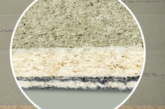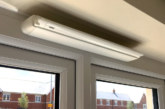Ben Hancock, Managing Director at Oscar Acoustics, offers some advice on how to rid pre-existing properties of unwanted noise in order to ensure the interiors of your redevelopment sound as good as they look.
Since the start of the pandemic, our working and living environments have become more important than ever. Many of us have switched our office space for a life working from home. But despite the initial comfort and convenience, we’ve seen that many properties simply aren’t up to the task when it comes soundproofing – and it’s negatively impacting occupant concentration, health and happiness.
Building Regulations Document E sets minimum standards for soundproofing residential buildings in England and Wales. However, while these are great for ensuring new builds and conversions comply, the standards don’t apply to existing dwellings, leaving hundreds of thousands of previously built properties with inadequate sound insulation.
Soundproofing is a crucial part of making spaces more comfortable, but some of the methods used to tackle noise transfer between floors can be too expensive, too complicated, too bulky, or worse – just plain ineffective.
For space-saving and cost-effective soundproofing between floors, consider acoustic ceiling hangers. Fast and simple to install from the room below, they tackle the problem of noise transfer between floors in any space by creating an isolated ceiling that significantly reduces the vibrations and sound pressure waves caused by noise in the rooms above.
A quality acoustic hanger should come with an approved BRE fire rating of over 90 minutes and be compliant with British Building Regulations ‘Approved Document E’, which deals with airborne and impact sound.
For added flexibility, a height-adjustable acoustic hanger will allow for a flat ceiling even across uneven joints and once complete will appear no different to a standard plastered ceiling. A major bonus is that it can be installed with only the minimal amount of ceiling height lost (as little as 6mm if you choose the right one).
It’s also possible to combine a cavity filler with an acoustic ceiling hanger for even more protection against unwelcome sounds. A wall and ceiling cavity filler will help reduce noise transfer between properties. Typically, this can be sprayed into a cavity before the void is closed, or blown through carefully drilled holes on existing structures, to improve the acoustic insulation of walls and ceilings. This also seals any gaps and cracks in the wallboard, around electrical outlets, plumbing and other irregularities so there are no compressed areas or voids to allow sound leaks or air infiltration. Look out for recycled products on the market for an environmentally friendly option and always make sure that the product you choose is fire rated.
Increasingly, interior acoustics is becoming an important conversation in the world of property development. Occupant welfare is now a number one priority and those considering the building acoustics with care will help provide a better quality of life in the long term, creating spaces that people will want to use for generations.








